Back to top: Lithics from Unit J2
Introduction
Just over 41% of all the artifacts in J2 are lithic artifacts. These artifacts represent a wide range of types including small flaked stones and large grinding stones and door sockets. There are also some lithic specimens (unworked stones).
Back to top: Lithics from Unit J2
Small worked stone
Chipped stone represents about half, if not more, of the lithic artifacts. The majority of small worked stone is obsidian. The finds are primarily debitage or small pieces of obsidian retouched into tools. There are also some pieces of flint debitage and flakes. In addition to the debitage and fragments there are a few recognizable blade fragments (some examples below):
| Obsidian blade fragments | 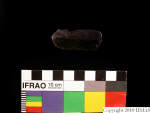 q122.1 | 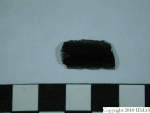 q319.6 |
| Flint blade fragments | 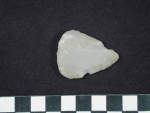 q298.1 | 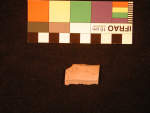 q729.1 |
Back to top: Lithics from Unit J2
Ground stone
In the ground stone category I include both large stationary items (i.e.querns and “door sockets”) as well as hand-held ground stone tools (i.e. manos, metates). These stones represent more than 25% of all the collected lithics. This category covers range of artifact types but some types are more common, such as the large ground stones with hollowed centers - sometimes also called doorsockets, smaller grinding tools - including the plano-convex basalt fragments, and small hand-sized stones. Some representative samples are shown below:
| Large ground stone fragments (door sockets) | 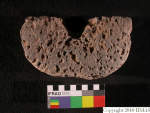 q167.2 | 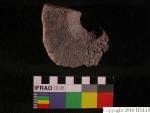 q605.1 | 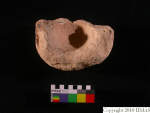 q836.1 |
| Grinding fragments | 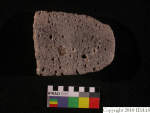 q621.2 | 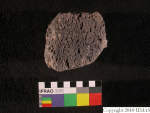 q657.6 | 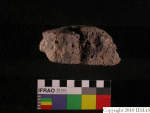 q724.2 |
| Small hand-sized grinding stones | 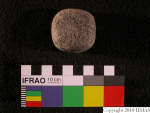 q362.1 | 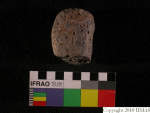 q664.2 | 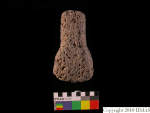 q840.4 |
Back to top: Lithics from Unit J2
Other artifacts
In addition to the widely found groundstone and chipped artifacts there are also some special finds in the lithic category. In J2 both stone weights and stone beads were identified.
| Stone beads | 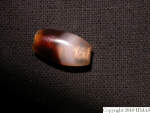 i7 | 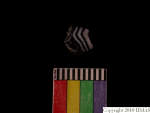 q24.2 | |
| Stone weights | 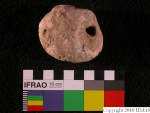 q714.2 | 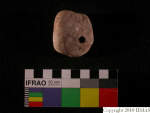 q743.1 | 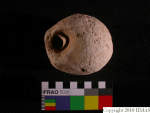 q901.5 |
Back to top: Lithics from Unit J2
Unknown artifacts
A large number, more than 30%, of the lithic artifacts still remain unidentifed. These objects are either categorized as “unknown” or as the generic term “lithic artifact”. This may be because some people are not trained in recognizing the different kinds of lithic artifacts or it may represent a large number of lithics that turn out to be non-worked stones (specimens) when examined in the lab.
Back to top: Lithics from Unit J2